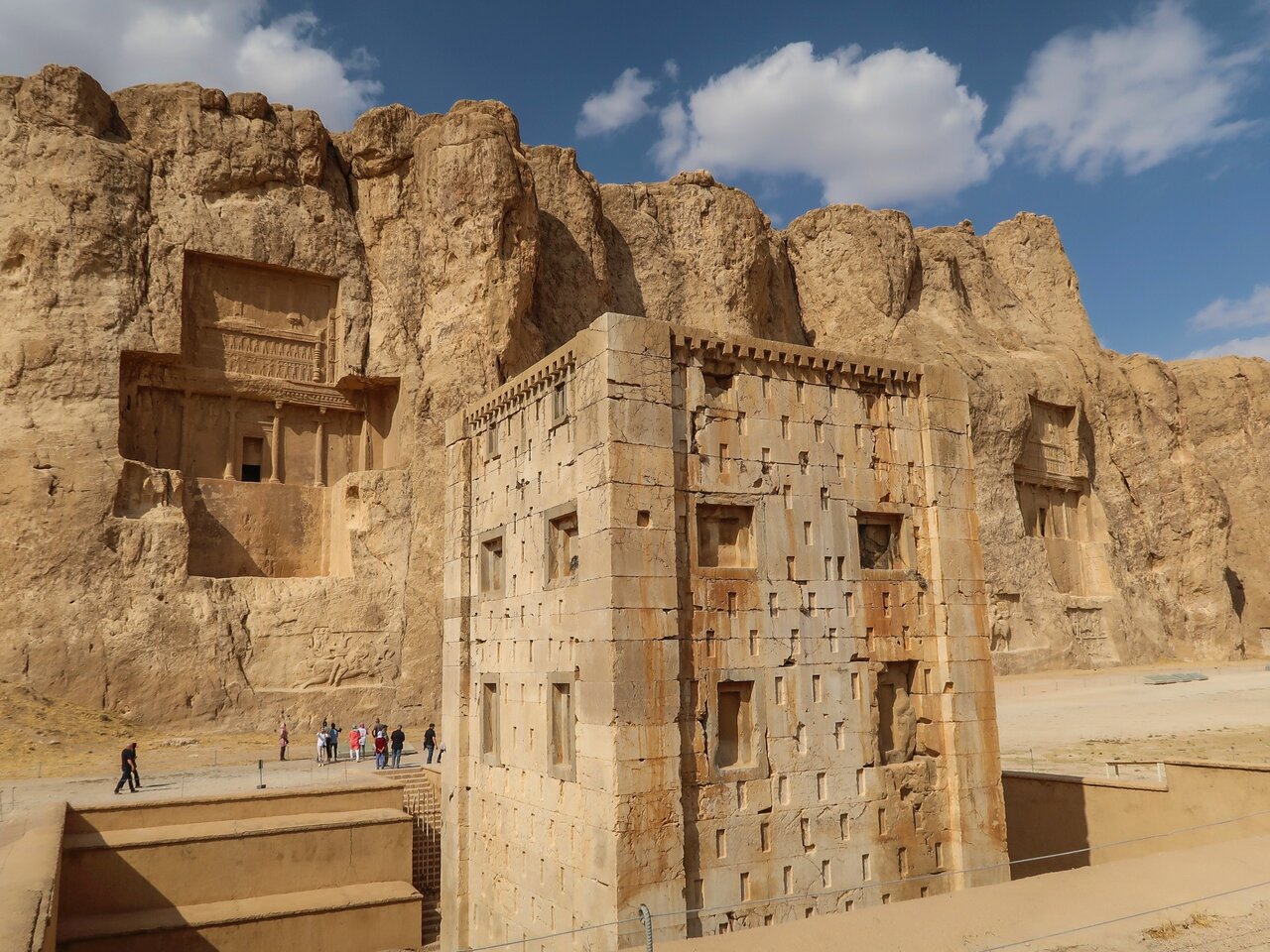Drainage system planned to protect Naqsh-e Rostam from landslide

TEHRAN – On Wednesday, the tourism chief of Fars province stated that excavations are ongoing at Naqsh-e Rostam to address the issues of landslide and subsidence, adding that the site’s drainage system will be put out to tender.
In an interview with ISNA, Mohammad Sabet Eqlidi explained that they are currently conducting excavations at Naqsh-e Rostam to eventually resolve the problems of landslide and subsidence, particularly during rainy periods.
Sabet Eqlidi emphasized that they will tender construction of a drainage system for Naqsh-e Rostam to ensure that rainwater does not seep under the paths of the site, thereby preventing landslides and subsidence in the future.
Elsewhere in his remarks, the official pointed to the UNESCO-registered Persepolis, another Achaemenid-era gem which is situated near Naqsh-e Rostam. He mentioned that several plans have been drafted for the Persepolis complex as well.
“These plans will touch upon the Southern Barzan, the entrance road, the pathway lighting system, and the expansion of the Persepolis Museum.”
The official continued, stating that one of the major developments at the Persepolis complex is the relocation of its administrative system outside the site. “Estimates have been made for this move, which will ultimately lead to the expansion of the Persepolis Museum and the creation of a professional museum at the site,” he explained.
Earlier this month, the head of the Hydrogeology Department at the Geological Survey and Mineral Exploration of Iran raised concerns about the dual threats facing the prehistorical Achaemenid structures located in the Marvdasht plain, including Persepolis and Naqsh-e Rostam. Iman Entezam-Soltani said the plain has experienced significant land subsidence over the past two years, amounting to 21 centimeters, and is also subject to deep geological fissures that pose a risk to these historically significant sites.
He further explained that while the core infrastructure of Achaemenid monuments rests on solid bedrock and is thus not directly impacted by soil subsidence, those parts situated on earthen foundations are increasingly vulnerable due to soil subsidence and the resulting fissures.
The Marvdasht plain has experienced noticeable subsidence, particularly in its central areas where [Achaemenid] structures are primarily located, he said. “This phenomenon tends to decrease in areas close to the mountainous regions.”
The expert underlined that cracks form at the intersection of bedrock and soil, posing a particular risk to the structural integrity of sites like Persepolis and Naqsh-e Rostam.
Elsewhere in his remarks, the expert emphasized the role of agricultural practices in exacerbating subsidence issues, particularly in plains where groundwater is extracted for irrigation due to the absence of nearby rivers. “The over-extraction of groundwater in restricted plains, where drilling new wells is prohibited due to the decline in groundwater levels, further aggravates the situation.”
In discussing potential countermeasures, Entezam-Soltani mentioned short-term engineering solutions such as injecting cement into fissures or diverting water from these areas, though these are merely temporary fixes.
He stressed the importance of achieving a water balance in the Marvdasht plain to prevent further subsidence by ensuring that water extraction does not exceed natural replenishment rates.
Naqsh-e Rostam, which literally means “Picture of Rostam”, is named after a mythical Iranian hero which is most celebrated in Shahnameh and Persian mythology. The necropolis embraces four tombs where Persian Achaemenid kings are laid to rest, believed to be those of Darius II, Artaxerxes I, Darius I, and Xerxes I (from left to right facing the cliff), although some historians are still debating this.
Beneath the funerary chambers are dotted with seven Sassanian era (224–651) bas-reliefs cut into the cliff depict vivid scenes of imperial conquests and royal ceremonies; signboards below each relief give a detailed description in English.
At the foot of Naqsh-e Rostam, in the direction of the cliff face, stands a square building known as Ka’beh-ye Zartusht, meaning Kaaba of Zoroaster. The building, which is roughly 12 meters high and 7 meters square, was probably constructed in the first half of the 6th century BC, although it bears a variety of inscriptions from later periods.
The plain of Marvdasht lies to the northeast of Shiraz. It stretches for some 40 km from north to south, and 30 km from west to east.
AM
Leave a Comment